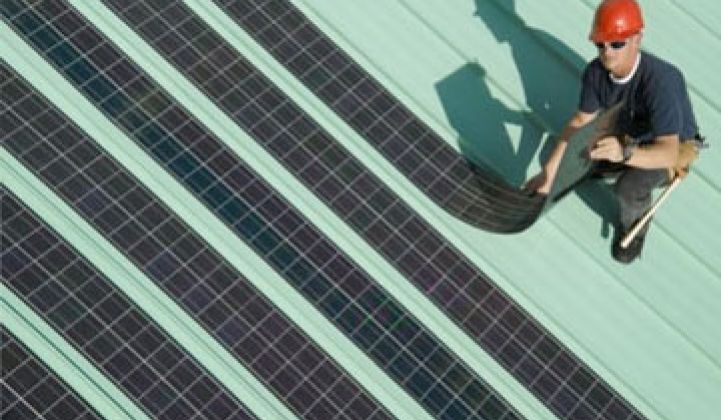But Rob Campbell, SoloPower's CEO, is keeping hope alive. We had heard some rumors about Korean investors and checked with the company.
Campbell told GTM, "We are in fact working with potential Asian investors in order to help provide a long-term platform for growth involving our U.S. manufacturing facilities, as well as creating new facilities in Asia."
New strategic investment is really SoloPower's only path forward. And that's what the CEO has to say in this position.
The Korea Herald reports that Campbell had met with "Korean convergence technology firm CTI Korea" and "is to open a solar panel manufacturing unit in Guangju and start phase one production as early as next year, according the the CEO." Campbell confirmed that was the plan, "subject to all necessary approvals."
Despite the promise of the technology's light weight, low materials usage, and low cost, the CIGS manufacturing scene is a bloodied hellscape of bankrupt companies, spectacular losses, or, in the best circumstance, a financial rescue at pennies on the dollar.
Solyndra is the most prominent failure, but other CIGS companies like AQT have faltered as well. CIGS firms HelioVolt and Ascent Solar gave over their firms to Asian conglomerate SK Group and TFG Radiant Group, respectively. Nanosolar is for sale and MiaSolé was sold to Hanergy.
All of the financing and interest in thin film now comes from Asia. Sand Hill Road cleantech VCs (the few that remain, that is) won't be backing many solar manufacturing plays from their current funds.
The CIGS thin film solar miracle remains unrealized. A few companies soldier on and might figure out the recipe for low-cost and high performance CIGS, including contenders Solar Frontier, Stion, or Solexant.
SoloPower was going after the same rooftop market as Ascent Solar, Global Solar, and the now-bankrupt ECD, except it was doing it with a more efficient product. The value proposition for flexible modules from SoloPower is that there is less hardware required to install the modules and the installation is easier and less expensive. However, this thesis has yet to be proven in volume and at scale. The other alleged advantage of flexible CIGS solar panels is that their lightweight nature opens up "value-engineered" rooftops that could not support the weight of conventional crystalline solar panels. This thesis also remains to be proven.
There are going to be fevered comparisons to Solyndra, but SoloPower did not draw down DOE loan funding -- although it did receive about $14 million in state subsidies. Solyndra spent a $535 million DOE loan and received about $700 million in private equity.
Greentech Media has learned that the San Jose, California operations have been reduced to a skeleton crew as the company looks for a buyer. This is a similar situation to that faced by Nanosolar and a number of other thin-film solar firms. Sources close to the company said that the firm had customers willing to pay a premium for the lightweight, flexible solar product -- but not enough to keep a factory humming. A few Chinese firms have been "kicking the tires" at SoloPower, as well, according to the source.
SoloPower raised more than $200 million from Hudson Clean Energy Partners, Crosslink Capital, Convexa, and Firsthand Capital.



